Bloom spikes!
This is the bloom-spikiest spring I can remember in Austin. All over town, agaves, sotols, aloes, hesperaloes, mangaves, manfredas, and yuccas are sending up flowering wands or blooming candelabras. My own garden is no exception, but the spikes I’m most excited by are towering over two Texas sotols (Dasylirion texana) along the driveway.
These have never bloomed before, and in fact I can’t recall ever seeing a Texas sotol in bloom elsewhere. Clearly, I’ve been missing out!
The sotol in front, which gets more sun, started its bloom spike first, and soon after the other one started, with a funny little kink about halfway up. (A third sotol in the back garden is now playing catch-up.) Both bloom spikes have reached about 12 or 15 feet. The front one burst into yellow bloom earlier this week, attracting numerous bees and other pollinators. In front, purple skullcap and ‘Peter’s Purple’ bee balm are starting to bloom.
I love purple skullcap (Scutellaria wrightii) — a real “wow” plant on a small scale.
On the other side of the circular driveway, a paleleaf yucca (Yucca pallida) is blooming, with creamy, bell-like flowers dangling from a blue-green spike. I can hardly believe the deer have not eaten this. They’ve already taken out several other yucca bloom spikes in the front garden this spring (must be delicious). Every morning I’m surprised to see it still standing.
Next to it, Jerusalem sage (Phlomis fruticosa) has finished blooming. Berkeley sedge (Carex divulsa) is the green groundcover, woolly stemodia (Stemodia lanata) the gray. ‘Green Goblet’ agave is a stately presence at the end. At far left…
…a wide-leaf giant hesperaloe (Hesperaloe funifera ssp. chiangii) is blooming — also a first for my garden! I’ve not been able to capture the bloom spike in photos. The flowers, way up high on a branching stalk, are small and pale, and they get lost amid the backdrop of live oak trunks.
One more view — still can’t really see those flowers though. It’s an impressive spike in person.
While we’re in the side yard, notice there’s a bloom stalk just starting on the Lindheimer nolina (Nolina lindheimeri) in the silver pot. And I can’t help noticing that the strings of silver balls (from Wind & Weather) hanging from the trees look a bit like bloom spikes too.
I’ll close with another artful “bloom spike”: the rusty-wire art piece rising from the charcoal pot in the foundation bed. Planted with ‘Pineapple Express’ mangave, the container needed something tall up top to balance its tall, narrow shape. Voila — art! A neighboring couple recently told me that they’d walked up the drive to see what was blooming in that container. Ha! A bloom spike that never quits.
I welcome your comments; please scroll to the end of this post to leave one. If you’re reading this in a subscription email, click here to visit Digging and find the comment box at the end of each post.
_______________________
Digging Deeper: News and Upcoming Events
Join the mailing list for Garden Spark Talks! Inspired by the idea of house concerts, I’m hosting a series of garden talks by inspiring designers and authors out of my home. Talks are limited-attendance events and generally sell out within just a few days, so join the Garden Spark email list for early notifications. Simply click this link and ask to be added.
All material © 2006-2018 by Pam Penick for Digging. Unauthorized reproduction prohibited.


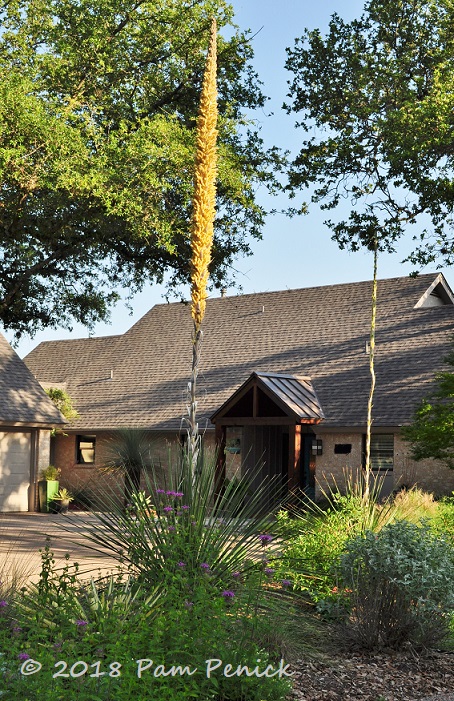
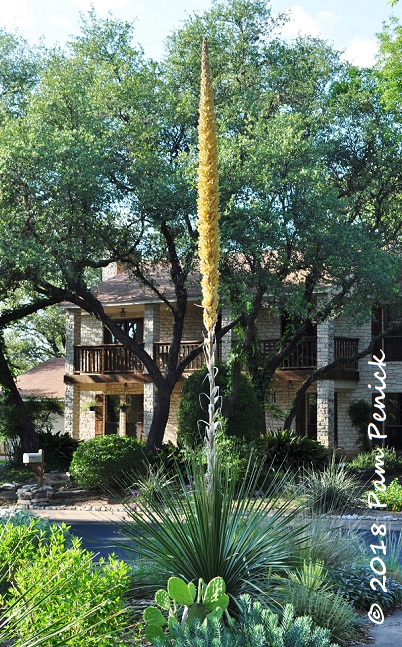
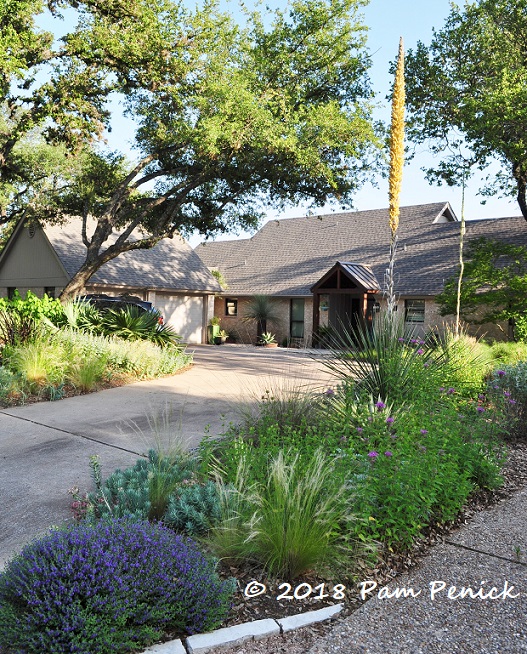
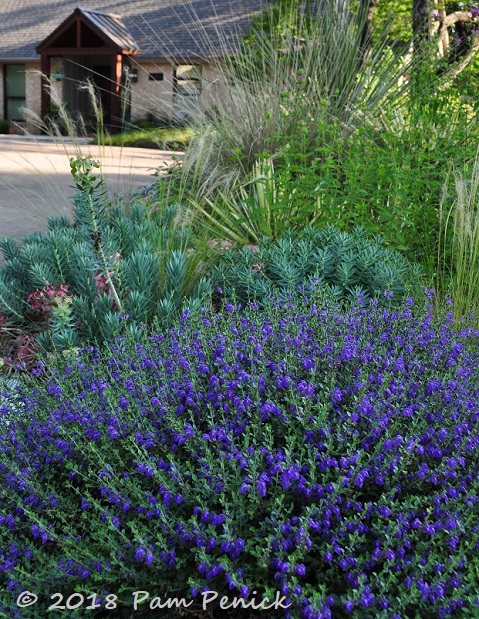

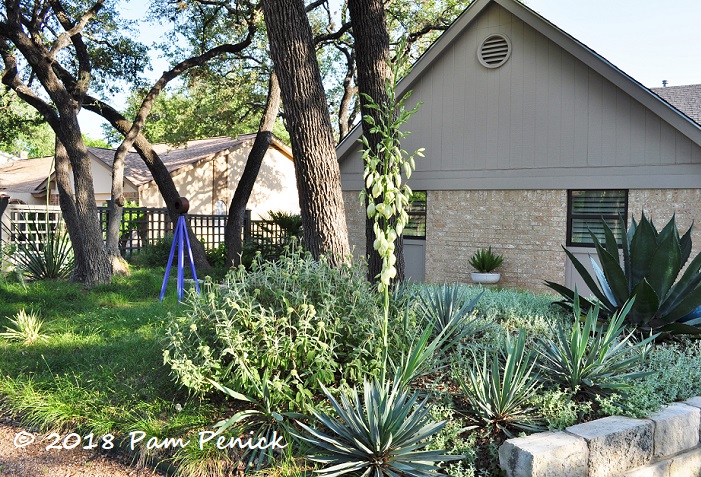
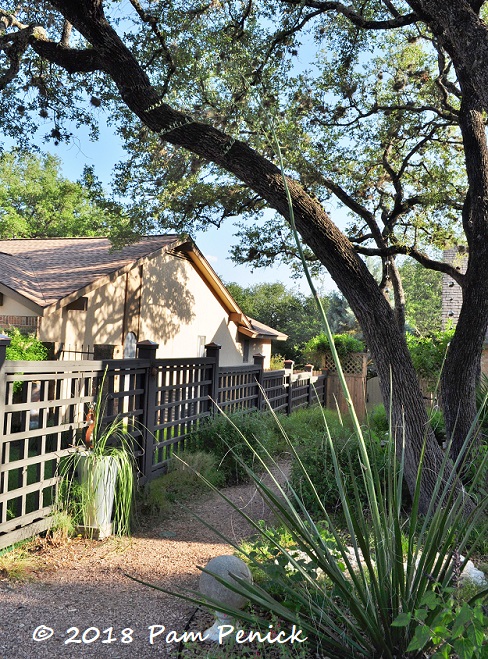
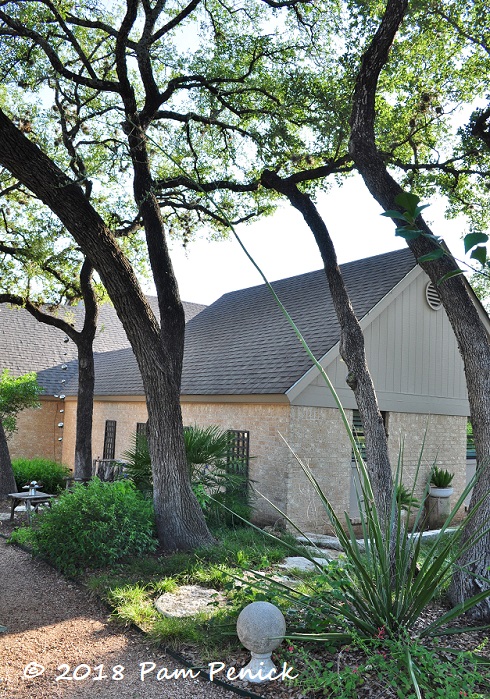
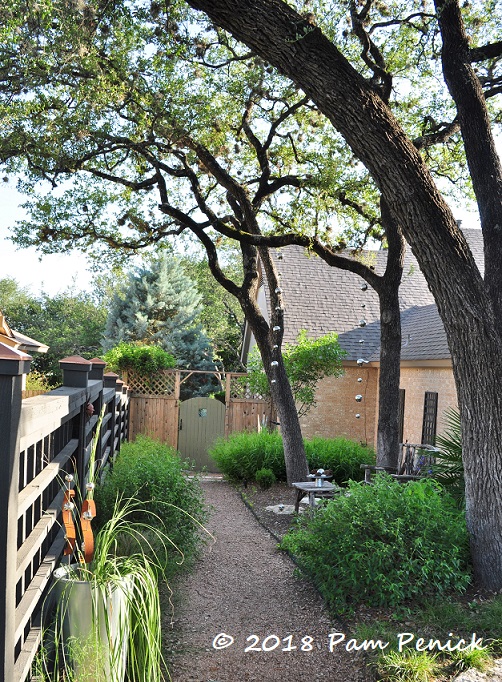

Fantastic photos of a fantastic group of plants. Yucca flowers are not only delicious to deer, but to us as well. Treat them as you would squash blossoms.
Oh, I can never even pick flowers to bring inside, much less pick them to eat. They’re too pretty in the garden. —Pam
All of your spikey plants seem to be blooming at once. What a sight it must be.
It’s pretty vertical around here right now. —Pam
Maybe they appreciated that early May deluge! I’ve noticed that the timing of rain, as much as the overall amount, can make a difference. My own Dasylirion longissima has never bloomed either. Ditto for my Yucca ‘Bright Star’.
Many had started before the early May deluge. You probably saw a lot of the blooms spikes around town during the Fling tour. I was wondering if it had anything to do with the cold winter and then the long, slow spring we had this year. Who knows, but it’s been fun to witness! —Pam
Glad the deer have let you enjoy (and share with us) the blooms on that Yucca pallida. Maybe the abundance this year has made them less compulsive about chowing down every last edible.
Maybe so. I’m happy for it. —Pam
So how come your deer have not eaten your yucca blooms? I had one that I felt sure would be missed because its flower spike was inside the branches of a tree. One found it! And your purple skullcap is a magnificent specimen.
They always eat my yucca blooms. This is the sole survivor. Maybe they’ve found other tastier yards to browse in. —Pam
Wow, that’s exciting–especially the Texas sotol! How interesting that the deer have left that one yucca bloom for you to enjoy!
They always keep me guessing. —Pam
What I really love about this post is that I have now seen your garden ‘in person’ and it gives me such a different perspective than I had before.
That IS fun, as I know from personal experience. 🙂 —Pam
Wow! Those spikes are amazing! I love the vibrant color of your Scutellaria wrightii — wish I could grow it here. P x
It’s one of my favorite native Texas plants, and I finally found the perfect hot, dry spot for it. —Pam
My husband collected a number of very stout sotol stalks from along the highway in Sanderson County. They make excellent and handsome walking staffs.
I bet they would — and they must not have any spiky parts, like my old whale’s tongue agave bloom spike did (ouch!). —Pam
I love your purple skullcap, and because it’s color stands out so well. I have had pink skullcaps, but disappointed that the color didn’t have a punch to it.
Love the sotol flower spikes. Beautiful!
Austin, TX
The purple is especially pretty, although I like the pink too. And the white version of the pink. —Pam
Ha! My Texas Sotol back in ABQ bloomed multiple times, though after the drought several years ago, they stopped and a couple died out. Yours’ look great. Like a giant exclamation point in bloom.
I need to walk my neighborhood and observe better: it seems our Yucca pallida and some other plants are ahead of the same in ATX…others are a week or two behind you. Hmmm…
These things are a mystery. —Pam
Love all the spikes! If I’m lucky I get a few here on my yucca in Michigan and I have to guard them closely to make sure the deer don’t get them before they bloom. The Texas sotol are breathtaking!
Those yucca spikes must be deer candy.